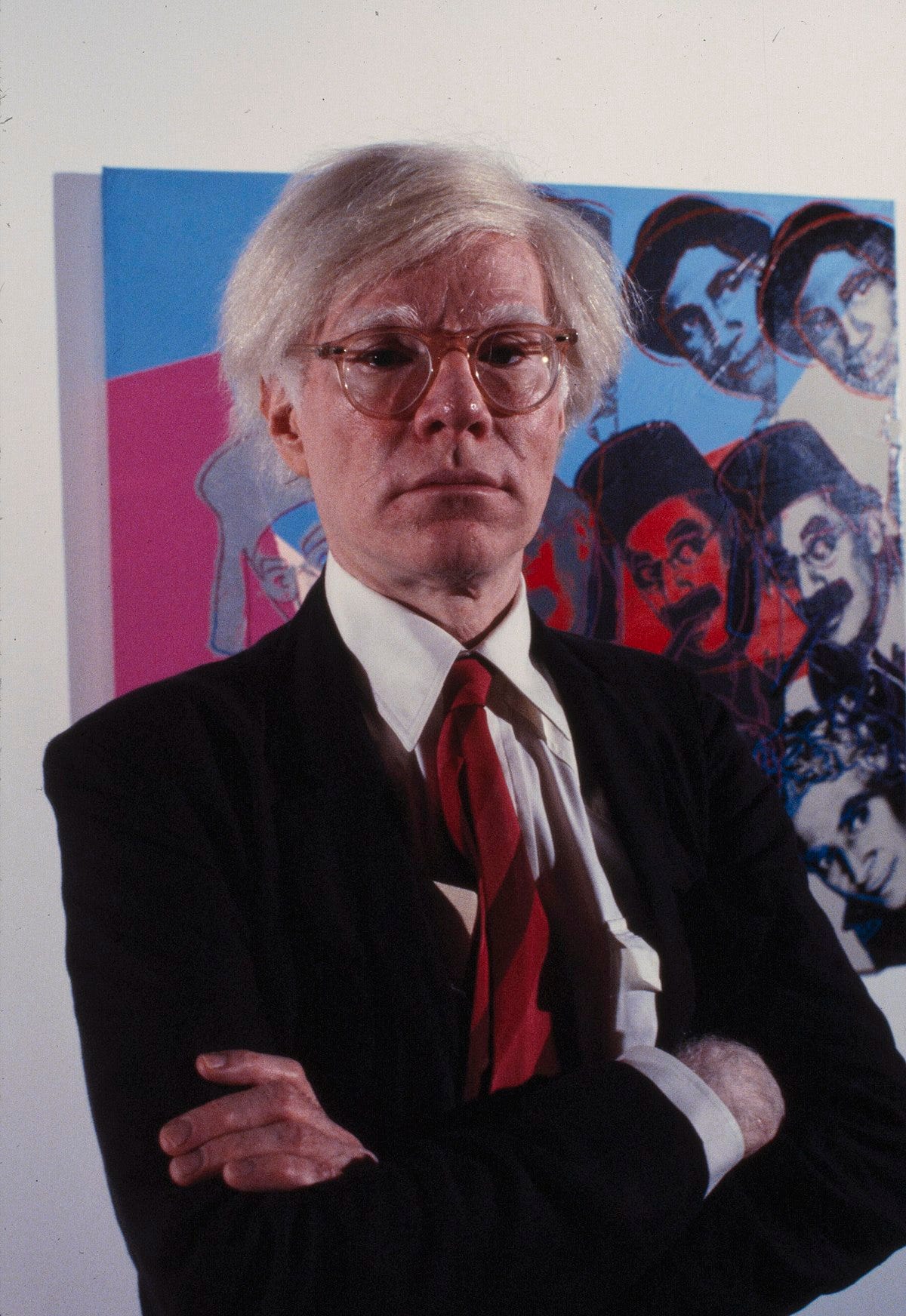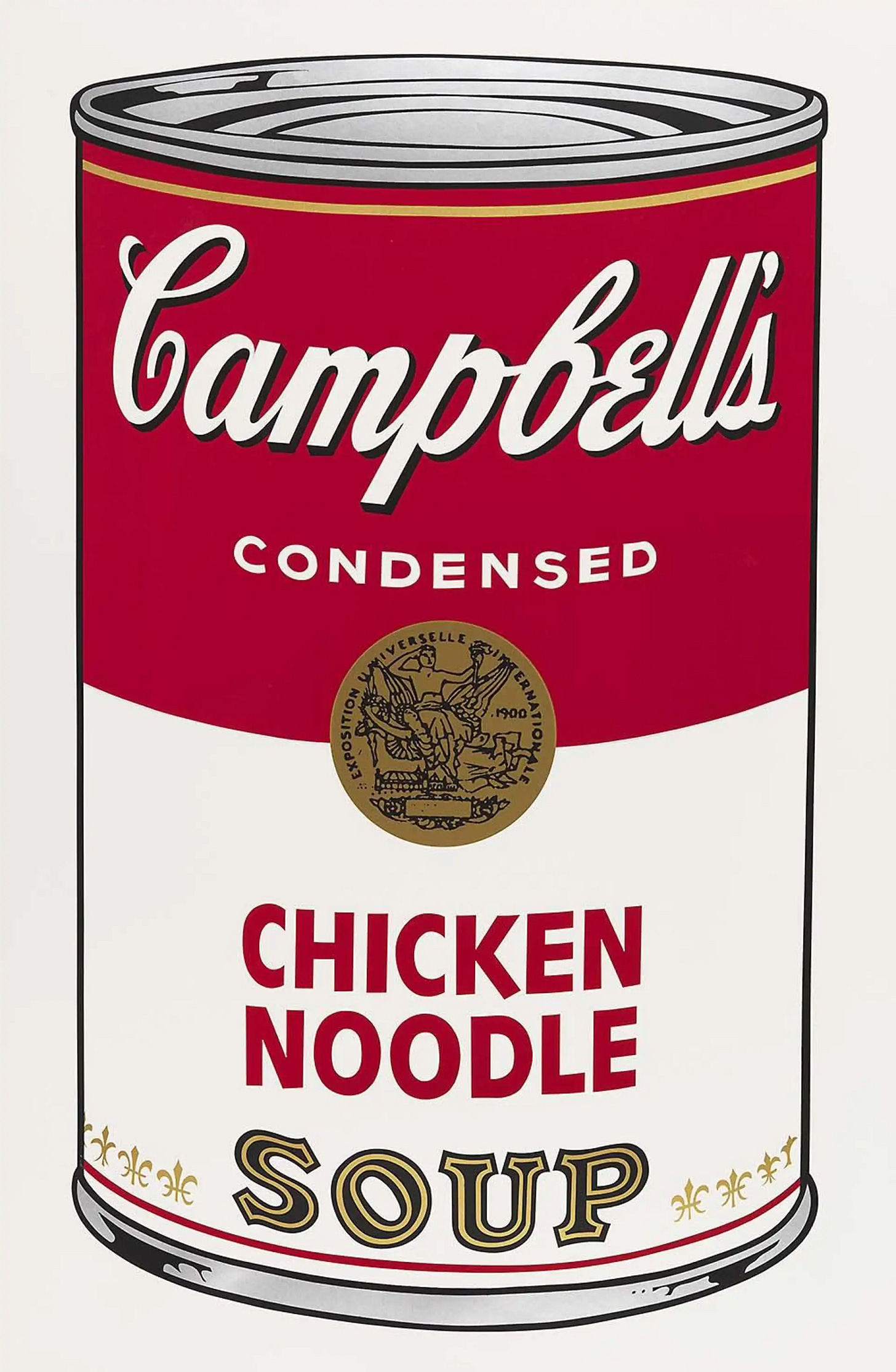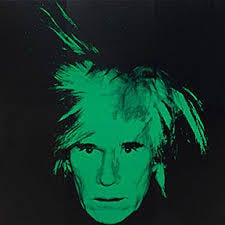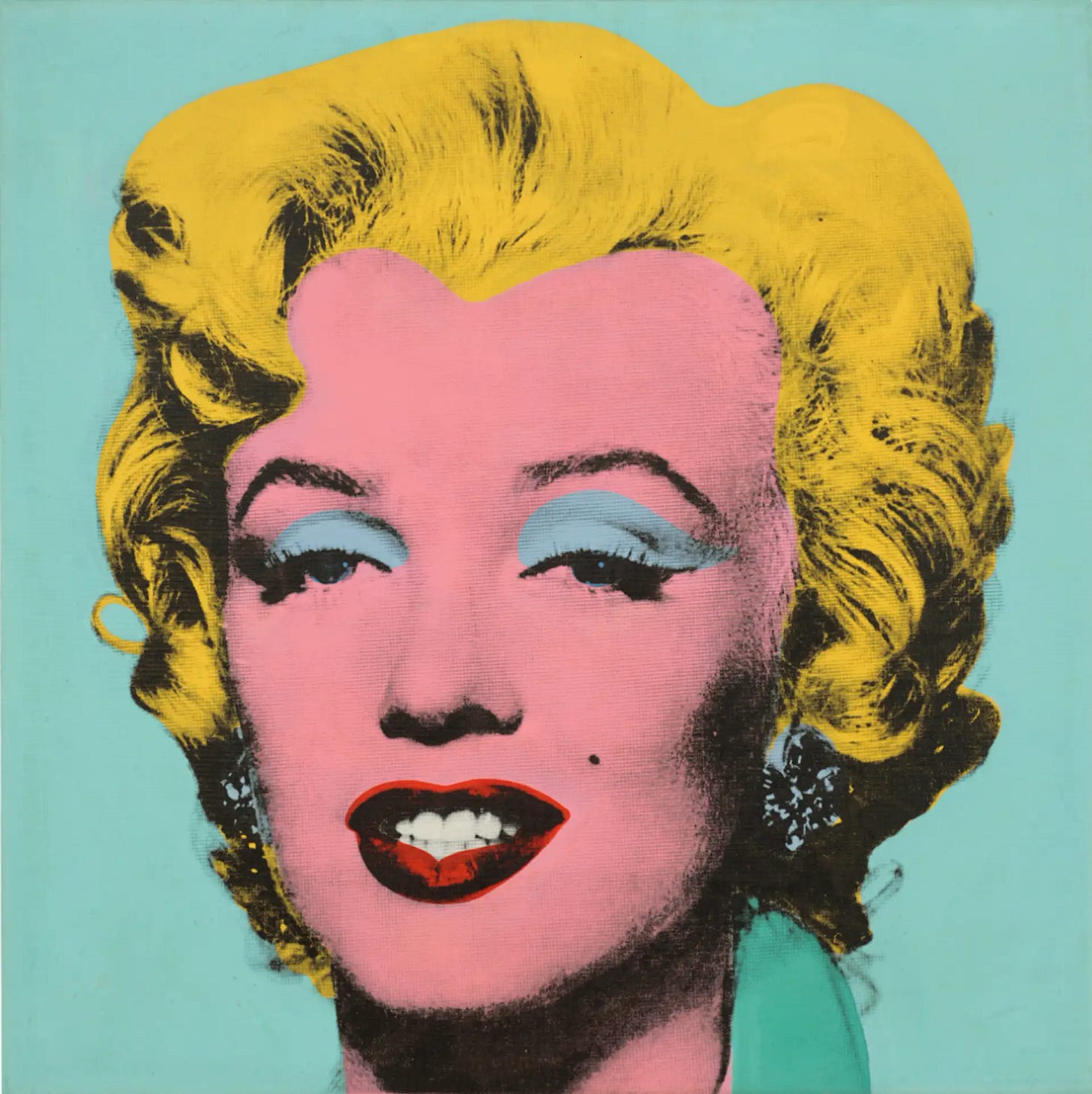“All the Cokes are the same, all the Cokes are good”
Warhol and loneliness.
Loneliness is a complex and deeply human experience that transcends time and space, affecting individuals across various walks of life. One artist who both grappled with and portrayed the theme of loneliness in his work is the iconic Andy Warhol. Warhol, a leading figure in the pop art movement of the 1960s, was renowned for his unique approach to art and culture, but beneath the surface of his glamorous persona, a sense of isolation permeated his life and creations.
Andy Warhol's art often depicted the commodification of popular culture, emphasizing consumerism and mass production. His famous works, such as the Campbell's Soup Cans and Marilyn Monroe portraits, showcased a fascination with the repetitive and impersonal nature of mass media and consumer society. In these pieces, one can discern a detachment, a commentary on the superficiality and isolation inherent in the modern world.
Warhol's personal life also mirrored the solitude he explored in his art. Despite his prominent status in the art scene and celebrity circles, Warhol was known for his reserved and introverted nature. His Factory, a studio and social hub, was a place where creativity flourished, yet it was also a space where Warhol retreated into his own world, surrounded by a coterie of individuals who orbited around him, creating a dynamic, yet inherently lonely, environment.
The artist's own musings on loneliness can be found in his aphorisms and quotes. Warhol once remarked, "I think everybody should be nice to everybody." This simple statement carries a poignant undertone, suggesting a desire for connection and kindness in a world that often seemed indifferent. The paradox of Warhol's persona, celebrated and isolated simultaneously, adds depth to the narrative of loneliness in his life.
Warhol's engagement with fame and the art scene intensified his sense of detachment. As he became a fixture in the glamorous circles of New York City, he grappled with the isolation that fame often brings. The glitzy parties and social events that characterized his public life stood in stark contrast to the private struggles with loneliness that unfolded behind closed doors.
In his later works, Warhol's exploration of loneliness took a more introspective turn. The "Last Supper" series, created in the 1980s, depicts a solitary, almost desolate atmosphere. The repetition of the iconic religious imagery underscores a sense of isolation even in the most sacred and communal moments. These pieces reveal a contemplative aspect of Warhol's art, delving into themes of mortality and solitude.
Andy Warhol's exploration of loneliness in his art offers a nuanced perspective on the human condition. His depictions of mass culture and celebrity lifestyles serve as a mirror reflecting the isolation inherent in the modern world. Simultaneously celebrated and lonely, Warhol's life and work intertwine to create a complex narrative that transcends the boundaries of his era, resonating with audiences who continue to grapple with the universal experience of loneliness.
Andy Warhol, born Andrew Warhola on August 6, 1928, in Pittsburgh, Pennsylvania, emerged as a central figure in the 20th-century art scene, leaving an indelible mark on the world of visual culture. Raised in a working-class immigrant family, Warhol demonstrated an early interest in art, leading him to study at the Carnegie Institute of Technology, where he earned a Bachelor of Fine Arts in pictorial design.
Warhol's career initially flourished in the world of commercial art, where he worked as a successful illustrator for magazines and advertising agencies. His distinctive style, marked by blotted line drawings and whimsical illustrations, gained attention and provided a stepping stone for his transition into the realm of fine art.
The 1960s marked a turning point in Warhol's career as he embraced the burgeoning pop art movement. He gained widespread recognition for his unique approach to art, challenging traditional notions and celebrating the everyday. In 1962, he exhibited his iconic "Campbell's Soup Cans," a series that would become emblematic of his exploration of consumerism and mass production.
Warhol's studio, known as "The Factory," became a legendary hub of creativity and avant-garde expression. It attracted a diverse array of artists, musicians, and celebrities, forming a dynamic community that fueled Warhol's prolific output. The Factory not only produced art but also served as a backdrop for Warhol's experiments with film, further expanding his influence beyond traditional artistic mediums.
Celebrity culture and the allure of fame became recurring themes in Warhol's work. His portraits of Marilyn Monroe, Elvis Presley, and Elizabeth Taylor transformed these figures into iconic symbols of pop culture, blurring the lines between high and low art. Warhol's fascination with fame and consumerism reflected the changing landscape of post-war America.
Warhol's oeuvre extended beyond visual art to encompass filmmaking, where he explored themes of boredom and voyeurism. His film "Sleep" (1963), featuring a six-hour continuous shot of a man sleeping, exemplifies his unconventional approach to storytelling and his willingness to challenge artistic norms.
As an openly gay artist during a time when societal attitudes were less accepting, Warhol's personal life added layers of complexity to his public persona. Though often described as enigmatic and reserved, Warhol maintained a carefully crafted public image while navigating the challenges of his personal struggles with his sexuality and health.
The artist's legacy endures through his impact on contemporary art and culture. Andy Warhol passed away on February 22, 1987, following complications from gallbladder surgery. His contributions to the art world, his exploration of mass media and consumerism, and his enduring influence on subsequent generations of artists have solidified his place as a cultural icon and visionary provocateur.






Have you seen "The Andy Warhol Diaries" on Netflix, Matt? It's so interesting. We forget that he survived an attempted assassination, and how that changed him. He's one of my favorite artists (right after Basquiat and Kandinsky). Artists often feel lonely and not fully understood. I think it's the curse of expression and never really feeling you conveyed it thoroughly. I'm currently watching "Feud: Capote and the Swans" (Gus Van Sant is directing). Truman is another character who never wanted to be alone, and yet his actions drove nearly everyone away from him at the end. I find it fascinating how talent can make one so lonely. ("The Capote Tapes" is a good watch. I think that's on Hulu here.) Great piece, my friend. xo
When I saw the Basquiat show in Vienna a year ago (I say this because maybe it’s travelling? Don’t know), I was struck by first their close relationship then the way Warhol seemed ostracised. Perhaps some of his own doing, not sure. But this stuck with me.